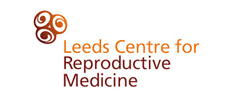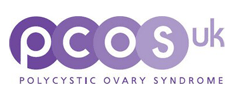
I have just returned from ESHRE, the annual European meeting that covers all aspects of reproductive science and medicine. There were many interesting presentations and a lot of publicity, although it’s interesting how the press pick up on stories that catch the imagination rather than reflect ground-breaking science. For example, there was a lot of interest in the study that demonstrated that lying down after intra-uterine insemination (IUI) treatment doesn’t increase the chance of conception, compared with getting up straight away. A number of journalists tried to extrapolate this into natural conception and whether it matters what women do after intercourse and whether it’s a myth that you should lie on your back with your legs in the air, which of course isn’t answered by this study.
I liked the way I was quoted in the Daily Telegraph, after I was asked about the best way to conceive naturally:
“After you have had sex, do whatever you want but don’t smoke,”
Professor Adam Balen, chairman of the British Fertility Society, added: “The important thing to say, is that if you want to get pregnant, have lots sex – as much as you want, however you want – and enjoy it, rather than focus on the time of ovulation.” He said there was a lot of confusion about female anatomy, which meant many couples imagined a straight vertical line between the womb and vagina. Couples might prefer to snuggle up after sex, but it would make no odds to their conception chances, he said. “The vagina is tilted and the womb is then tilted relative to the vagina and fallopian tubes and the ovaries, so it is not just one passage. So when you get up, many women think that everything is just going to fall out but anatomically that is not going to happen,” he said. Prof Balen singled out just one bedroom act which would damage conception chances – lighting up a post-coital cigarette. “After you have had sex, do whatever you want but don’t smoke,” Dr Balen said.
The danger of paying too much attention to papers presented at conferences is that the abstracts available before the meeting often don’t tell the whole story and when the presentations are given we can then identify flaws in the science. Furthermore many papers that make the headlines never make it into peer-reviewed journals. For example there was a lot made of a study suggesting that acupuncture might double the chance of conception with IVF but the figures presented were wrong, the study design flawed and the paper heavily criticised by experts in the audience.
I was very impressed by the work of Justin St John, from Australia (who incidentally was in the same A level class as me at school in London back in the ’70s), who has been looking at the effects of enhancing oocyte function by manipulating mitochondrial activity in animal models. In the same session Professor Evelyn Telfer from Edinburgh described her hunt for the elusive “oocyte precursor or stem cells” that might represent the ability of the ovary to produce new eggs, challenging the common belief that at birth the ovary has a fixed number of oocytes, which are then lost progressively over time. She has found the cells but is still uncertain as to whether these may be viable as fertilisable oocytes that could turn into embryos and create a pregnancy.
Pre-implantation Screening of Embryos – Is this the future?
There was a lot of interest in the pre-implantation screening of embryos both to access their genetic integrity, but also the mitochondrial DNA in trophectoderm biopsy of the outer layer of cells in day 5 blastocyst embryos. Is this the future? Well it’s too early to say for sure, but the technology is advancing at a pace with the latest genetic techniques and the ability soon to combine both genetic and mitochondrial screening into a single assay. Whether this technology should be universally applicable is still to be determined – but the field is developing rapidly.
Personalised Medicine was a Key Theme
One of the mantras of the meeting was “individualisation of treatment” or “personalised medicine” and this was the theme of the key note lecture that I gave on ways to predict response to ovarian stimulation and how to minimise the risks of over-response. Too much has been made of “mild” or “minimal” IVF these are obsolete terms, in my view, as all IVF should use the lowest effective dose to achieve stimulation so, in essence, all IVF should be as mild as possible, which is certainly how we approach IVF in Leeds and I believe this to be the case throughout the UK.
There is continued interest in our drive to enhance fertility education to young people by way of informing them about what happens naturally during puberty, how to understand the biology of reproduction in order that they can have safe sex, avoid unwanted pregnancy and at the same time be aware of the factors that may influence their fertility for the future. This is all part of the Fertility Education Initiative that I have started within the BFS and together with many other national organisations. Please see the BFS website for the latest on this and other BFS activities that I am leading on, including a drive to improve the funding of fertility treatments in the UK. I applaud the Scottish Government’s move to increase funding to three cycles, even for those who may have a child from a previous relationship. I am actively involved with the Fertility Fairness campaign and I have been in communication with the HFEA, DH and NHS England to seek equity around the UK.
Once again I was misquoted in the press as I was reported as saying that we should be teaching 9 year olds about infertility. This isn’t what I said – I simply said that 9 year olds need to be introduced to an understanding about how their bodies work!
In my role as Chair of the British Fertility Society we have also had a very busy few months, with a very well attended Training Course in April and the Study Week in June. The reproductive medicine session at the RCOG World Congress in Birmingham last month was packed and the scientific presentations of a very high standard and I gave a key note lecture on PCOS.
First Birth from Ovarian Tissue Transplant
Finally I would like to congratulate Professor Richard Anderson and his team in Edinburgh who recently announced the first birth in the UK from an autologous transplant of cryopreserved ovarian tissue – a very impressive and important milestone for our field.










